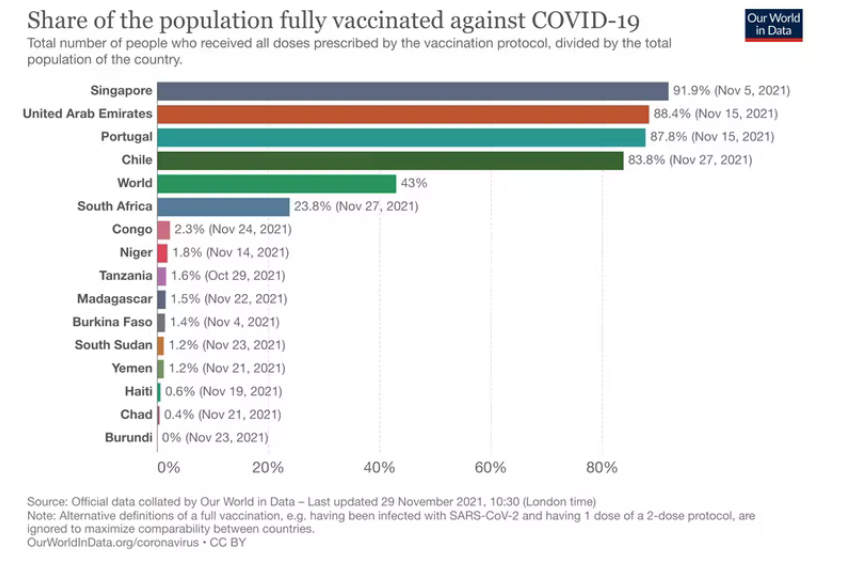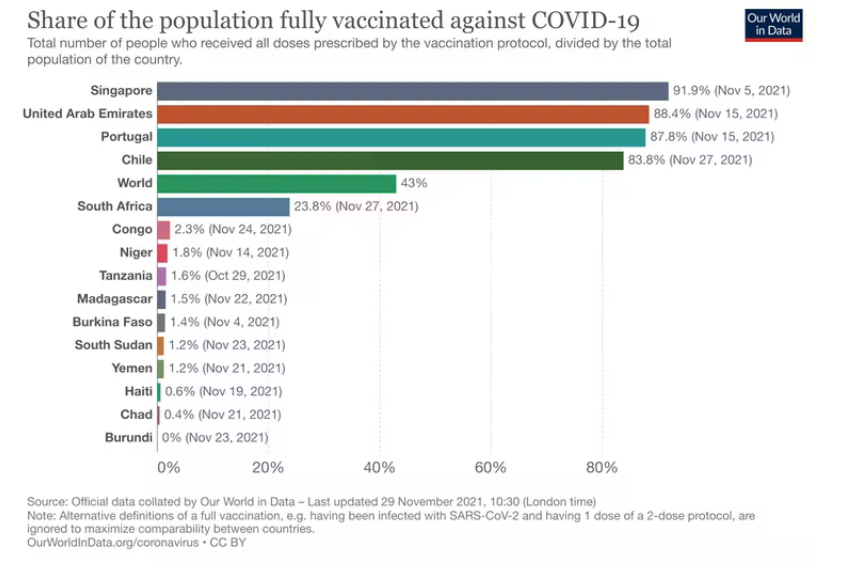At times, being generous can be the best way to protect one’s own interests.
The Lancet
Sebastian Contreras , Álvaro Olivera-Nappa , Viola Priesemann
December 01, 2021
The COVID-19 pandemic changed nearly every aspect of our lives. The rapid spread of the disease exposed several layers of inequality that it has exploited to propagate preferentially. We find these layers in different contexts and levels, such as the impossibility to self-isolate and do remote work (at the individual level) or economic constraints to deploy a fast vaccination program (at the country level). In the context of vaccination programmes, resources must be optimised to alleviate the pandemic burden where it is needed the most. In The Lancet Regional Health Europe, Yang Liu and coauthors analyse the health and economic impact of different age-stratified vaccine prioritisation programs in 38 countries of the World Health Organization (WHO) European Region and provide a modelling framework to optimise country-specific vaccine allocation.
From early 2021 on, COVID-19 vaccines have helped alleviate the pandemic’s burden on society by mitigating contagion, protecting the population against severe disease, and allowing for less restrictive measures, especially in countries with high vaccine uptake and availability.
Due to the strong dependency between age and disease severity, age-stratified vaccination was a logical first approach to allocating resources. However, there are several dimensions to consider when optimising vaccine allocation in a given country. Among them, those considered by Liu and colleagues: mortality, morbidity, comorbidity-adjusted life expectancy loss, comorbidity-and-quality-adjusted life-years loss, and human capital loss. Implicitly, talking about vaccine prioritisation forces us to assign human lives (and life quality) a fixed value in our favourite currency. Thus, governments faced a highly nontrivial problem, where the best solution for their societies is not straightforward or homogeneous across countries. Liu’s framework allowed policy- and decision-makers to timely evaluate the alternatives that best protect the interests of their nations, considering all the indexes mentioned above simultaneously. Noteworthily, Liu’s modelling framework has been available online already since July 2020.
During vaccine rollout, some non-pharmaceutical interventions (NPIs) were required to mitigate the spread of COVID-19, with a negative impact on productive sectors and tourism. Notably, these sectors are mostly driven by a young working-class who, despite being unprotected at the beginning of vaccination programmes, is largely expected to keep economies going. Liu and colleagues showed that in countries where vaccination programs are deployed fast and effectively (i.e., vaccinating 80% of their eligible population within one year), prioritising younger adults can be equally beneficial since elder risk groups are also protected when reducing contagion in younger age groups. Therefore, wealthier countries with excess vaccines can reactivate their economies faster if following this alternative. Conversely, countries with low vaccine availability cannot vaccinate the drivers of contagion and thus face a double problem. First, they cannot de facto protect the population at risk, and second, they cannot fully restart their economic activities since they would require NPIs to mitigate the spread of COVID-19, given the low immunity levels across the population. Therefore, differences between vaccination programs will make countries that are already at economic antipodes drift further apart.
Since mid-2021, vaccine availability does not pose a problem in high-income countries. Instead, these countries face the challenge that vaccine-hesitant and vaccine-denial individuals pose to the timely completion of vaccination programmes. Often, the lack of individuals willing to receive the vaccine at a given moment has caused the expiration and discard of available vaccine doses.
Therefore, it is crucial for these countries to understand the drivers of vaccine hesitancy and implement timely initiatives for re-selling or donating surplus doses to countries where they are needed.
The above highlights the need for a coordinated and responsible distribution of vaccines: increased supplies for one country come at the expense of others.

Liu’s study provides explicit guidance for country-specific optimal vaccine allocation and raises the awareness of regions with excess vaccine resources to consider sharing them before risking them expiring.
Liu’s framework identifies the optimal strategy for resource allocation within countries.
However, we must stop acting and thinking as if the pandemic could be managed locally. International vaccine inequity is a matter of general concern.
Moreover, even if governments are interested in principle only in the wellbeing of their nations, helping other less favoured countries might even have advantages in combating COVID-19, e.g. by preventing importing infections when opening their borders, thus minimising the loss of human lives.
At times, being generous can be the best way to protect one’s own interests.
At times, being generous can be the best way to protect one’s own interests.
About the authors & affiliations
Sebastian Contreras, a Alvaro Olivera-Nappa, b and Viola Priesemann,b
a Max Planck Institute for Dynamics and Self-Organization, Am Faßberg 17, 37077 Gottingen, Germany €
b Centre for Biotechnology and Bioengineering (CeBiB), Dpt. of Chemical Engineering, Biotechnology and Materials, University of Chile, Beauchef 851, 8370456, Santiago, Chile
References
See the original publication
DOI: https://doi.org/10.1016/j.lanepe.2021.100277
Originally published at https://www.thelancet.com.
Selected reference
Yang Liu, Frank G. Sandmann, Rosanna C. Barnard, Carl A.B. Pearson, Roberta Pastore, Richard Pebody, Stefan Flasche, Mark Jit,
Optimising health and economic impacts of COVID-19 vaccine prioritisation strategies in the WHO European Region: a mathematical modelling study,
The Lancet Regional Health — Europe,
Volume 12, 2022, 100267, ISSN 2666–7762,
https://doi.org/10.1016/j.lanepe.2021.100267.












